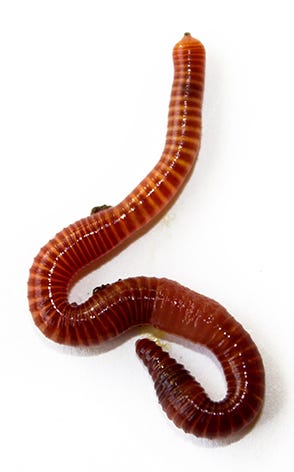Red wigglers: For sustainable composting
The Ultimate Guide to Red Wigglers for Healthy Soil
The role of red wigglers, clinically called Eisenia fetida, in soil health and wellness is a topic of boosting rate of interest among sustainable horticulture enthusiasts and agricultural professionals alike. These microorganisms not just recycle organic waste but also improve soil fertility with their nutrient-rich castings. Understanding exactly how to effectively grow and make use of these worms can change your gardening methods. However, the procedure of setting up a favorable setting for these helpful animals and maximizing their payment to soil health and wellness includes numerous vital factors to consider that merit closer evaluation. What are the vital steps to guarantee a thriving worm population?
What Are Red Wigglers?
Red wigglers, scientifically understood as Eisenia fetida, play a vital function in composting and soil wellness. These earthworms are particularly appropriate for vermicomposting, a procedure that utilizes their natural habits to break down raw material properly. Unlike various other earthworm types, red wigglers thrive in abundant organic atmospheres, making them suitable for compost bins and worm farms.
Gauging about three to four inches in size, red wigglers have a distinctive reddish-brown coloration and a segmented body that helps in their mobility with rotting materials. They are detritivores, meaning they prey on decaying organic substances, including kitchen area scraps, plant particles, and paper items. red worms. Through their usage of these materials, they assist break down complex compounds, transforming them right into nutrient-rich spreadings that boost soil high quality
Red wigglers are likewise respected dog breeders, efficient in recreating quickly under ideal problems. Their flexibility to various environments enables them to prosper in a series of composting systems. By understanding the biology and ecological significance of red wigglers, gardeners and farmers can harness their capacities to improve dirt health and advertise sustainable methods in farming.

Benefits of Red Wigglers
The numerous advantages of incorporating red wigglers into composting practices dramatically enhance soil wellness and fertility. These earthworms, clinically called Eisenia fetida, excel at damaging down organic issue, changing kitchen scraps and backyard waste into nutrient-rich vermicompost. This process not only accelerates decay but additionally improves the dirt with essential nutrients such as nitrogen, phosphorus, and potassium.
Furthermore, red wigglers enhance soil framework by producing accumulations that help with oygenation and water retention. Their burrowing activities advertise a well-aerated setting, permitting roots to accessibility oxygen more effectively. This improved oygenation likewise fosters helpful microbial task, which is essential for vitamins and mineral cycling and general dirt vitality.
Along with boosting dirt composition and framework, red wigglers add to pest administration. Their presence in the dirt aids suppress hazardous nematodes and various other parasites, reducing the need for chemical interventions. Additionally, the application of vermicompost results in increased plant resilience versus diseases, promoting much healthier growth.
Establishing Up a Worm Bin
Establishing a worm container can be a rewarding undertaking for those seeking to improve their composting efforts. The first action is selecting a suitable container, ideally constructed from plastic or wood, with a capability of at the very least 10 gallons to fit the worms and their food. Make sure the container has sufficient ventilation-- pierce little holes in the cover and sides to promote airflow while preventing excess wetness build-up.

Present the red wigglers into the bin, enabling them to adapt to their new atmosphere. Preferably, begin with a populace of about one pound of worms per square foot of surface. Position the worm container in a location that maintains a steady temperature level, ideally between 55 ° F and 77 ° F. With these foundational actions, your worm bin will certainly be ready to thrive in the quest of healthy and balanced dirt.
(red worms)
Feeding Your Red Wigglers
When it comes to supporting red wigglers, comprehending their nutritional needs is important for preserving a healthy worm container. These worms grow on a varied diet regimen, mostly made up of natural matter.
Portion control is crucial; overfeeding can cause odor issues and draw in pests. A great guideline is to supply food that is approximately equivalent to the weight of the worms in the bin each week. Display the intake rate and adjust feeding amounts accordingly.
To advertise a balanced diet plan, objective to give a mix of nitrogen-rich eco-friendlies, such as vegetable peels, and carbon-rich browns, such as dried leaves or cardboard. Additionally, preserving correct dampness degrees is necessary-- food scraps should be moist yet not soaked - red worms. By carefully managing their diet plan and setting, you will certainly make certain that your red wigglers continue to be healthy and efficient, adding successfully to the composting procedure
Utilizing Worm Castings in Soil
Integrating worm spreadings right into soil can considerably enhance its health and wellness and fertility. Worm castings, likewise called vermicompost, are an abundant resource of nutrients, including nitrogen, phosphorus, and potassium, crucial for plant development. When included to dirt, these spreadings boost its framework by increasing aeration and enhancing dampness retention, which is specifically helpful in arid regions.
Additionally, worm spreadings introduce useful microbes that promote a healthy and balanced dirt ecological community (red worms). These microorganisms help in damaging down raw material, making nutrients extra conveniently available to plants. The presence of these microorganisms also helps subdue soil-borne conditions, lowering the need for chemical plant foods and chemicals
To make use of worm spreadings effectively, blend them into the leading couple go to this website of inches of soil before planting or apply them as a top dressing around developed plants. A suggested application price has to do with 10-20% spreadings combined with dirt to optimize nutrient accessibility without overwhelming the plants.
Verdict
In conclusion, red wigglers, or Eisenia fetida, play a critical function in improving dirt health through their vermicomposting activities. Ultimately, the combination of red wigglers right into dirt administration methods promotes sustainable farming by reducing dependency on chemical fertilizers and cultivating advantageous microbial task.